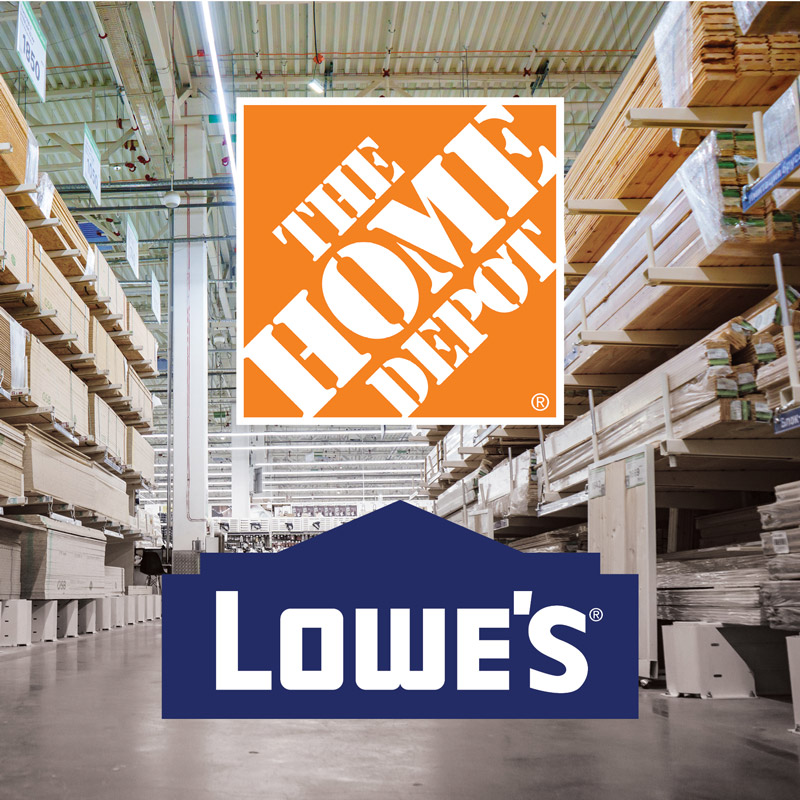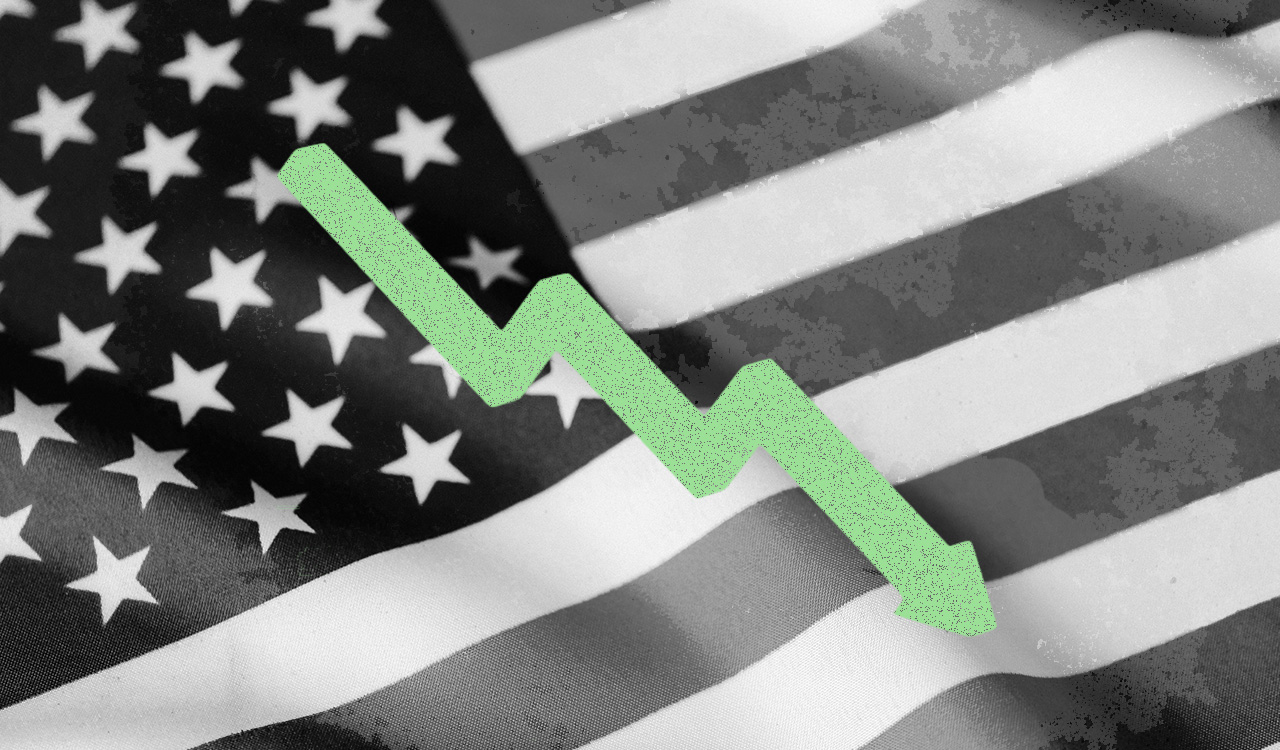For most of the past quarter century, Home Depot and Lowe’s have appeared to be unstoppable growth machines. Combined, the two home improvement giants grew revenue from just $35 billion in 1997 to over $125 billion a decade later, as they gained share in a high-growth market.
While sales sputtered during the Great Recession and the associated housing crash (especially for Home Depot), the two chains’ combined sales recovered to $125 billion by 2012. Since then, Home Depot and Lowe’s have doubled their revenues again, surpassing $250 billion combined last year.
However, Home Depot and Lowe’s have run into trouble recently. Entering the year, both chains expected sales to be flattish or decline slightly in 2023. Sales trends weakened during the first quarter, though, forcing both companies to slash their full-year revenue and earnings forecasts.
For now, Home Depot and Lowe’s executives think 2023 will turn out to be a blip on the radar, with solid growth resuming before long. Yet the long-term outlook may not be as rosy as they think. Higher interest rates could weigh on sales growth for both companies (and the home improvement sector broadly) for years to come.
Sales Abruptly Downshift
During 2020 and 2021, U.S. homeowners found themselves awash in disposable income due to rising home prices, strong stock market returns, and stimulus programs. Meanwhile, they were spending less money on experiences like travel, concerts, and dining out. As a result, many invested huge sums to refresh their homes.
Home Depot and Lowe’s were two of the biggest beneficiaries of this tidal wave of home-related spending. Home Depot added $41 billion to its top line in fiscal 2020 and fiscal 2021 combined. Lowe’s grew its revenue by $24 billion over the same period.
Sales growth moderated last year. Home Depot grew revenue by $6.2 billion (4.1 percent) in fiscal 2022, while Lowe’s revenue would have declined slightly but for a $1.4 billion benefit from having an extra week in the fiscal year.
In its initial guidance for fiscal 2023, Home Depot projected that sales and comparable sales would be approximately flat this year. Lowe’s anticipated that comparable sales would decline by as much as 2 percent. However, both retailers reduced their forecasts last month, citing a big headwind from lumber deflation, along with unfavorable weather and a downturn in discretionary demand. Home Depot now expects a 2 percent to 5 percent dip in sales and comparable sales for the year. Lowe’s is calling for comparable sales to slip 2 percent to 4 percent.
Management Isn’t Worried
Neither company’s management seems fazed by the slowdown in sales. “While the near-term environment is uncertain, we remain very positive on the medium-to-long term outlook for home improvement and our ability to grow share in a large and fragmented market,” commented CEO Ted Decker in Home Depot’s first-quarter earnings release.
Lowe’s CEO Marvin Ellison made similar comments on the company’s recent earnings call. He noted, “… [O]nce we navigate through this uncertainty, we remain bullish on the long-term outlook for our industry due to the unique convergence of structural drivers and demographic trends that are supportive of home improvement demand.”
Many commentators have come to similar conclusions. The U.S. housing stock is aging due to a slowdown in new home construction following the Great Recession. In theory, that should support home improvement demand. Other pundits say the pandemic made people appreciate their homes more, unleashing a multiyear boom in home improvement projects.
One Huge Tailwind Has Disappeared
Considering the tremendous growth of the home improvement sector (and particularly Home Depot and Lowe’s) over the past few decades, it’s easy to understand this widespread optimism. Yet industry executives and analysts may be overlooking just how much the sector’s growth has been propelled by falling interest rates.
That megatrend has reversed with a vengeance since the beginning of 2022. That bodes ill for Home Depot, Lowe’s, and their peers. As recently as 1990, the average 30-year fixed mortgage rate in the U.S. exceeded 10 percent. Even as late as mid-2000, the 30-year mortgage rate sat around 8 percent. The 30-year mortgage rate fell to around 6 percent by 2002 and hovered there until the global financial crisis. Mortgage rates then slid to around 4 percent by 2012 and stayed in that vicinity for most of the following eight years. The Fed’s massive bond-buying campaign in 2020 and 2021 finally drove the 30-year mortgage rate to an all-time low below 3 percent in early 2021.
Falling interest rates have been a huge boon to the home improvement sector by freeing up disposable income for homeowners. The monthly payment on a $250,000 30-year mortgage is $1,834 at an 8 percent interest rate. That drops to $1,499 at 6 percent and $1,194 at 4 percent.
Over the past few decades, U.S. homeowners have been able to refinance their mortgages into lower and lower rates, freeing up more money for discretionary spending. Just as frequently, they have tapped into their home equity with “cash-out” refinances. The long-term downtrend in interest rates has often made it possible for homeowners to increase their loan balances significantly while paying the same amount each month.
In 2021, U.S. homeowners tapped $248 billion of home equity using conventional cash-out refinances, according to Freddie Mac: the highest level since 2007. On the same basis, they tapped just $28 billion in 2014. U.S. homeowners opting for cash-out refinances in 2021 on average took nearly $56,000 of equity out for a $3 increase in their monthly payment. This deluge of “free” money enabled many Americans to launch expensive renovation projects that supported the home improvement sector’s growth well into 2022.
Today, nearly all U.S. homeowners have locked in mortgage rates well below current levels. Even if mortgage rates moderate to around 5 percent in the years ahead, cash-out refinances will remain unattractive for the vast majority of borrowers. Falling home prices across much of the U.S. are also discouraging homeowners from taking cash out of their homes.
Meanwhile, the spike in interest rates that began last year ended a boom in new home construction before it got very far. That cuts into the home improvement giants’ growth prospects with homebuilders.
Returning to Trend Would Be Painful, Too
With the rock-bottom interest rates of the past decade unlikely to return, homeowners will be much less likely to tackle expensive, discretionary home renovations in the years ahead. Even when they do take on home improvement projects, they may be more frugal than in recent years, when it was cheap to take equity out of their homes to pay for upgrades.
As a result, sales at Home Depot and Lowe’s could continue falling beyond 2023 as the market normalizes following the 2020-2022 boom. Considering that the U.S. soft home market has been in retreat for over a year, a similar downturn in the home improvement sector would hardly be a surprise.
Yet even if Home Depot and Lowe’s fare better than soft home retailers, just returning to their pre-pandemic growth trends would be a significant setback. During the boom times of 2020 and 2021, both chains crammed about six or seven years of growth into two years. If that surge was merely driven by temporary consumer euphoria and future demand being pulled forward (which seems quite likely), Home Depot and Lowe’s could face three or four years of zero growth just to return to the prior trend line.
Home Depot and Lowe’s are both well-run retailers with attractive business models. But the steady decline of interest rates (especially mortgage rates) over the past few decades has been a huge, sometimes underappreciated driver of their growth. The reversal of that long-term trend points to lean times ahead for both companies.




